What to Do When Driving an Adopted Kitten Home
Table of Contents
Bringing a kitten home for the first time is both exciting and nerve-wracking. For many, the journey starts with a car ride, and making this first experience comfortable for your furry friend is crucial.
Whether introducing the kitten to another cat or navigating their first night, it’s essential to prepare ahead of time to ensure their safety and well being. Let’s dive into everything you need to know when Driving an Adopted Kitten Home.
Why Preparation Matters When Bringing a Kitten Home
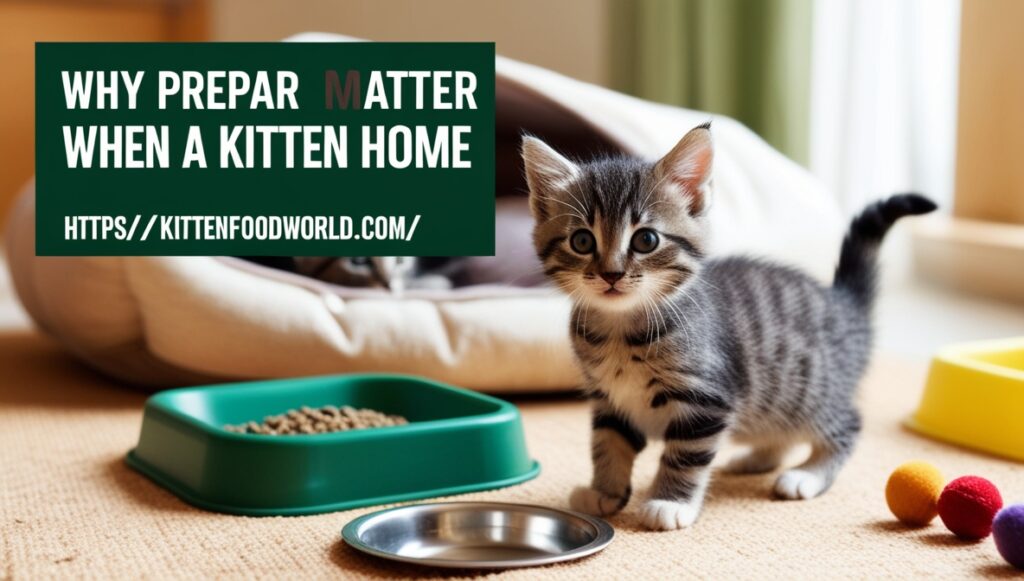
Adopting a kitten is a big change for them and you. The car ride is the first step in helping your kitten feel safe in their new environment. Without proper preparation, the trip can turn stressful for your new furry friend. A calm journey sets the tone for their adjustment and helps them settle in faster.
When you’re bringing a new kitten home to another cat or an unfamiliar house, ensuring they feel secure is key. Even a few minutes in a car can be overwhelming for a kitten, so imagine a longer drive! This guide will help you handle it like a pro.
Choosing the Right Carrier for the Ride
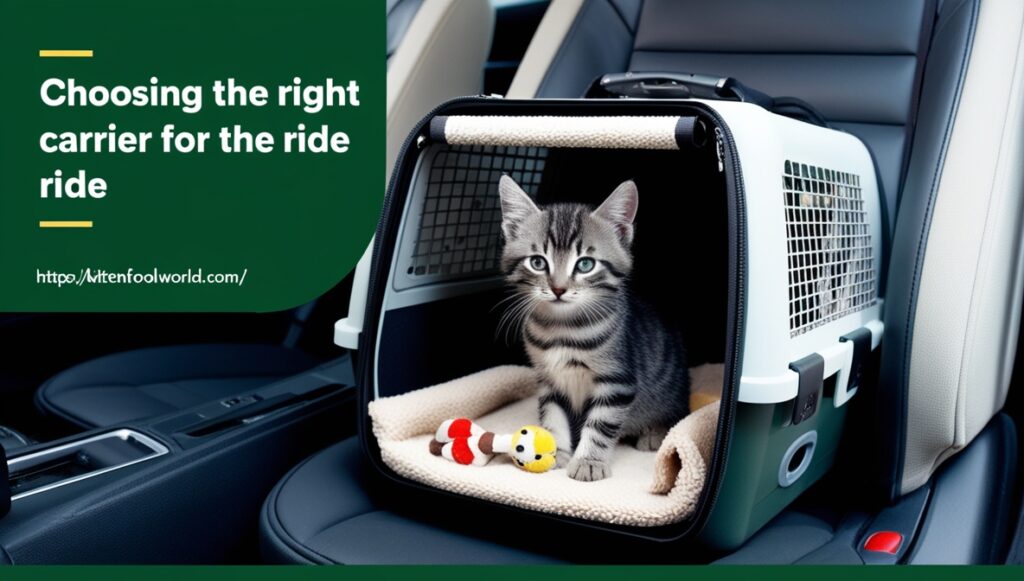
The first thing you’ll need is a reliable pet carrier. Never transport a kitten in your lap or loose in the car. A sturdy carrier with enough ventilation and space for the kitten to move is essential.
Place a soft blanket or towel inside the carrier to make it more comfortable. If possible, add an item that smells familiar to the kitten, like a toy from their previous environment. This can help reduce anxiety during the trip.
How to Prepare for the Journey
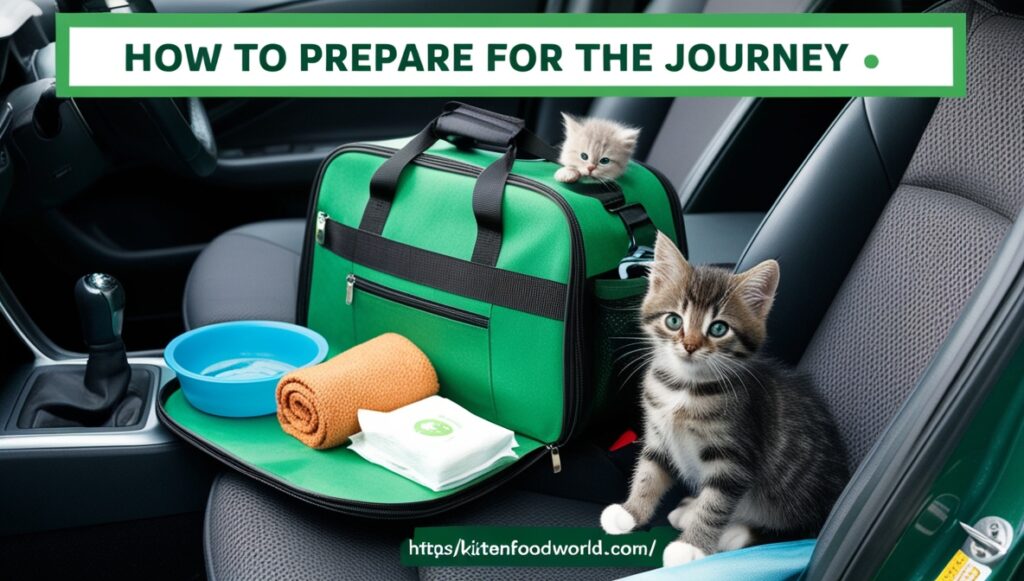
Before you hit the road, make sure the car is kitten-proofed. Secure any loose objects that might fall or shift during the drive. If you’re traveling during warmer months, ensure the car is well-ventilated but avoid direct air conditioning on the kitten.
Pack a travel bag with essentials like:
A backup blanket or towel
A small bowl and water
Kitten-safe wet wipes
A toy for distraction
Helping a Scared Kitten During the Ride
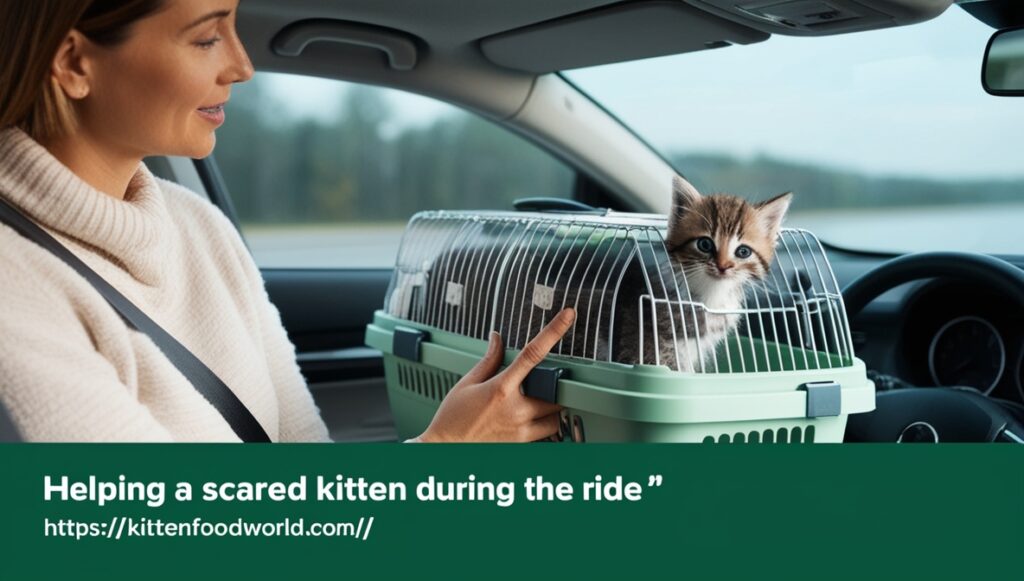
It’s normal for kittens to feel scared and hide or meow during the drive. If they’re meowing, resist the urge to open the carrier to comfort them it’s unsafe. Instead, speak to them in a calm and soothing voice. A relaxed tone can work wonders to reassure them.
You can also play soft music or calming sounds to drown out the road noise. Avoid sudden stops and jerky movements, as these can startle your kitten and make them more anxious.
Should You Stop During a Long Drive?
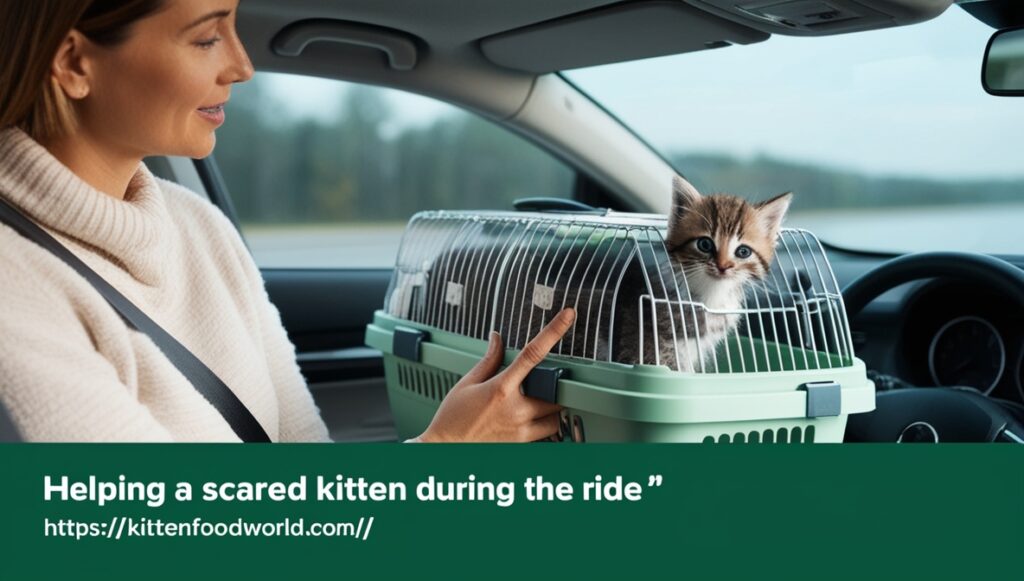
If your drive is over an hour, consider making short stops to check on your kitten. However, avoid opening the carrier outside the car. Instead, park in a safe spot ensure the car doors are closed and then open the carrier briefly to give the kitten a few comforting strokes.
Keep water available, especially if it’s a warm day. Dehydration can add to their stress, so offer a small amount of water at each stop.
Bringing the Kitten Home for the First Time

When you arrive home, don’t immediately introduce your kitten to the entire house. Start by taking them to a quiet room where they can decompress. If you’re bringing a new kitten home to another cat, keep them separated initially to avoid overwhelming either pet.
Set up a cozy corner with food, water, a litter box and a soft bed. Allow your kitten to explore this small area at their own pace. The first night is crucial for helping them adjust, so keep the environment calm and noise-free.
How to Kitten-Proof Your Home Before Arrival
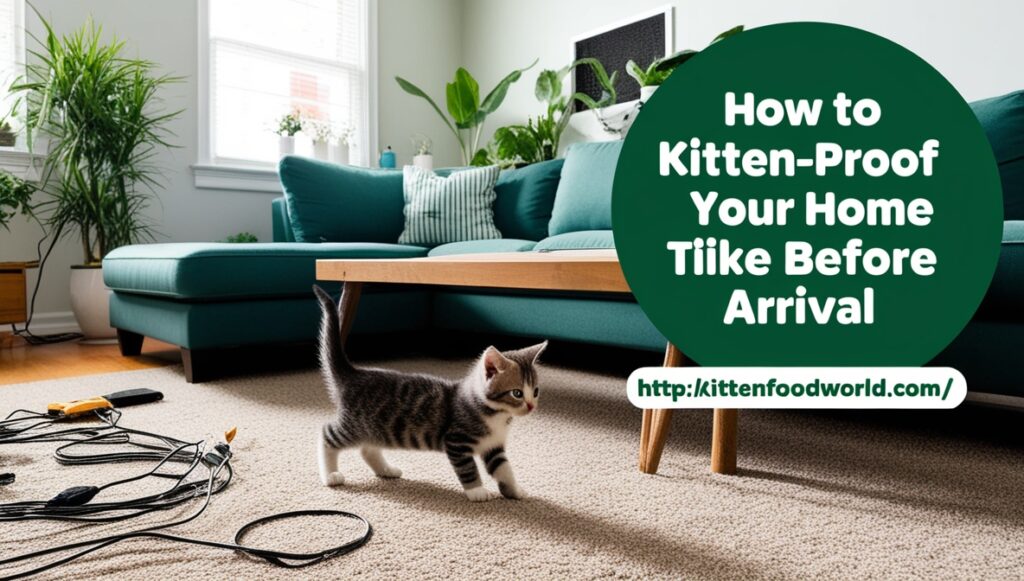
Before the kitten arrives, ensure your home is safe and free from hazards. Remove or secure:
- Loose wires or cords
- Toxic plants
- Small items they could swallow
- Unstable furniture
Block access to dangerous areas like staircases, high shelves, or spaces behind furniture. Kitten-proofing your home creates a safe space for exploration and reduces stress for both of you.
How Long to Keep Your Kitten Isolated
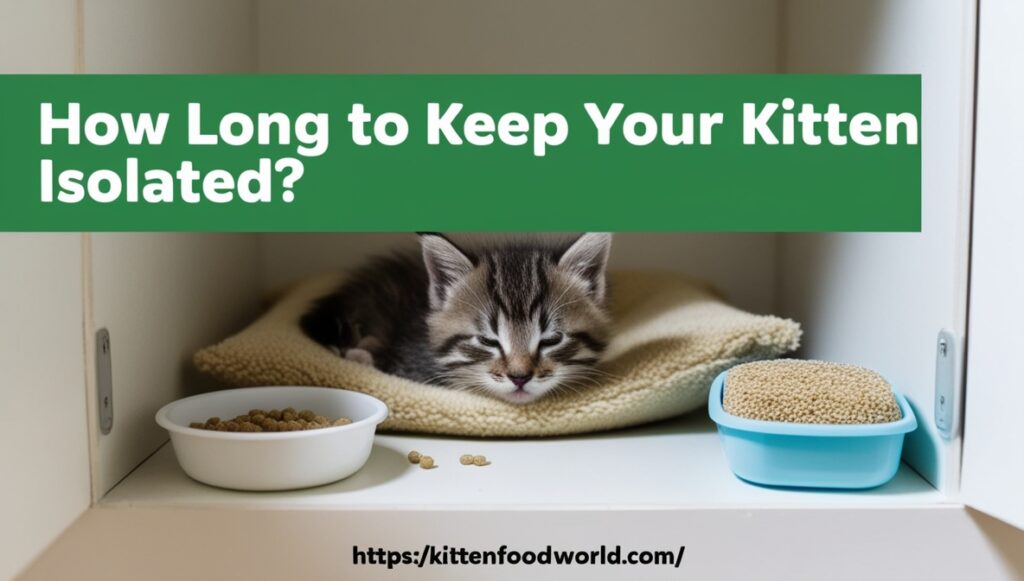
Isolation isn’t just for introductions to other pets it also helps kittens acclimate to their new surroundings. Keep your kitten in a quiet room for the first 1-2 days or until they show signs of settling in such as relaxed body language and curiosity.
When introducing them to another cat, use a gradual approach. Allow them to sniff each other through a closed door and monitor their reactions. Rushing the process can lead to fear or aggression.
Spending Time with Your New Kitten
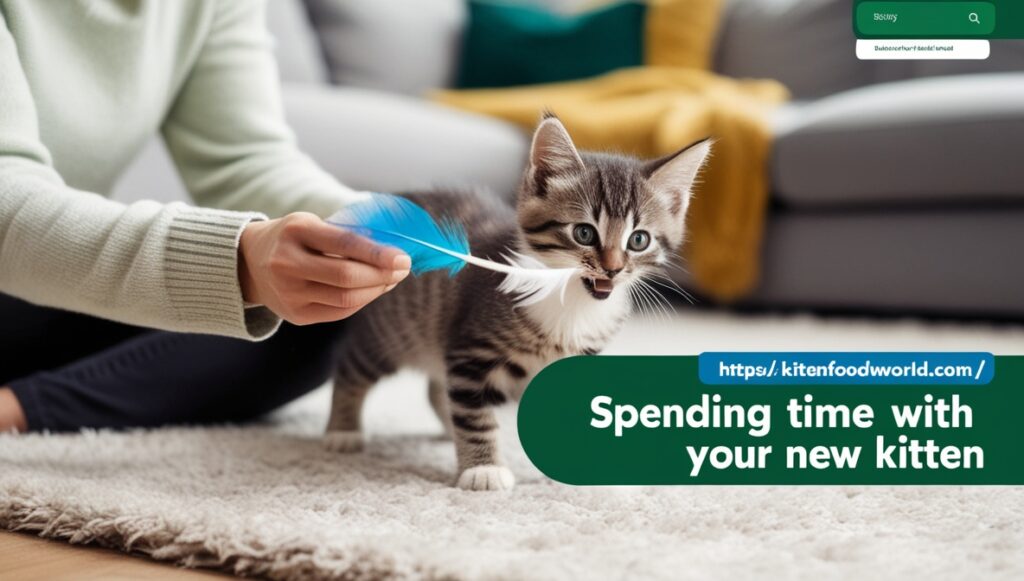
One of the most common questions is, “How much time do you need to spend with a new kitten?” The answer is: as much as possible during the first week. Spending quality time builds trust and helps them adjust to their new home.
Start with short play sessions and gentle petting. Over time, increase the duration to establish a strong bond. If your kitten hides, let them come out on their own terms rather than forcing interaction.
Signs Your Kitten is Settling In

Wondering how to tell if your kitten is getting comfortable? Here are some signs to look for:
- Purring and relaxed posture
- Curiosity about their surroundings
- Willingness to eat and use the litter box
- Playful behavior
Every kitten is different, so don’t worry if it takes a few days for them to show these signs. Patience and consistency are key.
Final Thoughts on Bringing a Kitten Home
Driving an Adopted Kitten Home marks the beginning of a beautiful journey. With a little preparation, you can turn what might be a stressful trip into a calm and positive experience. Remember to focus on their comfort, safety, and gradual acclimation to their new environment.
Bringing a kitten home for the first time is a milestone, and by following these tips, you’ll set the stage for a happy and healthy life together. Related Articles the Russian Blue Kitten, Kitten Treats, How to Know If a Kitten Is Dying and Are Candles Bad for Cats?
FAQs
1. How should I prepare for driving an adopted kitten home?
Before heading home, ensure you have a secure cat carrier, some soft bedding, and a small towel or blanket. Familiarize yourself with the route to minimize travel time and ensure a stress-free journey for the kitten.
2. Can I hold the kitten during the drive?
It is not recommended to hold the kitten while driving. Always place the kitten in a carrier to keep it safe and prevent distractions or accidents during the trip.
3. What type of carrier is best for transporting a kitten?
A well-ventilated, sturdy carrier with a secure latch is ideal. Ensure it is appropriately sized for the kitten, allowing it to sit, lie down, and turn around comfortably.
4. Should I feed the kitten before the journey?
Avoid feeding the kitten immediately before the drive to prevent motion sickness. Offer food and water at least 2–3 hours before traveling.
5. How do I make the carrier comfortable for the kitten?
Place soft bedding or a small blanket inside the carrier. You can also include a toy or item with the scent of the kitten’s previous environment to provide comfort.
6. Can I play music during the drive?
Yes, but choose soft, calming music or keep the volume low. Loud or jarring sounds can increase the kitten’s stress levels.
7. Should I stop during the journey to check on the kitten?
For short trips, it is best to keep the drive continuous. For longer trips, stop in a safe location to check on the kitten and offer water if necessary.
8. What should I do if the kitten meows a lot during the drive?
Meowing is normal as the kitten adjusts to its new surroundings. Speak to it in a calm, reassuring tone, but avoid taking it out of the carrier while the car is moving.
9. Is it safe to travel with multiple kittens together?
If the kittens are familiar with each other, they can share a carrier, provided it is spacious enough. If not, use separate carriers to avoid stress or conflicts.
10. Can I use a harness instead of a carrier?
A harness is not recommended for car travel as kittens can escape or get tangled. A carrier is much safer and more secure.
11. What if the kitten has an accident during the trip?
Line the carrier with an easily washable towel or puppy pad to handle accidents. Carry extra towels, wet wipes, and a plastic bag for quick cleanups.
12. Should I introduce the kitten to other pets immediately after the drive?
No, allow the kitten to settle in its designated safe space first. Introduce other pets gradually over a few days to avoid overwhelming the kitten.
13. How can I prevent motion sickness in the kitten?
Avoid feeding just before traveling, keep the car well-ventilated, and drive smoothly. If the kitten is prone to motion sickness, consult a vet for advice.
14. Is it okay to let the kitten out of the carrier once I’m home?
Yes, but only in a safe, quiet room prepared for the kitten. Allow it to explore at its own pace and keep doors and windows closed.
15. What should I do if the kitten appears stressed during the drive?
Speak softly to reassure the kitten. Ensure the carrier is stable and avoid sudden movements or loud noises. Stress usually subsides once the kitten feels secure.
16. How long should the drive be when bringing a kitten home?
Keep the drive as short as possible to minimize stress. If the journey is longer than an hour, plan short breaks to check on the kitten.
17. Can I open the carrier during a stop to comfort the kitten?
Only open the carrier in a secure, enclosed space where the kitten cannot escape. Otherwise, it’s safer to comfort it through the carrier’s openings.
18. Should I bring someone along to help during the trip?
If possible, bring a companion to help monitor the kitten and provide reassurance, especially for long journeys.
19. What if the kitten is too scared to enter the carrier?
Encourage the kitten by placing treats or toys inside the carrier. Avoid forcing it in; instead, allow it to explore and enter willingly.
20. How do I ensure a smooth transition after reaching home?
Set up a quiet, safe room with food, water, litter, and a cozy bed. Allow the kitten to acclimate to its new environment before introducing it to the rest of the house.







